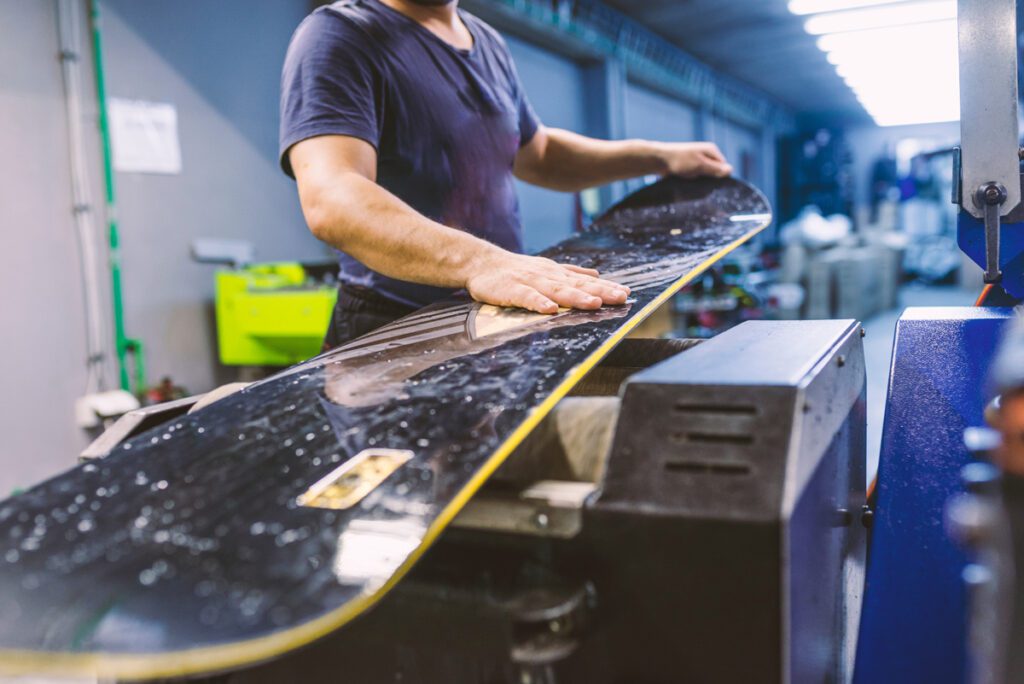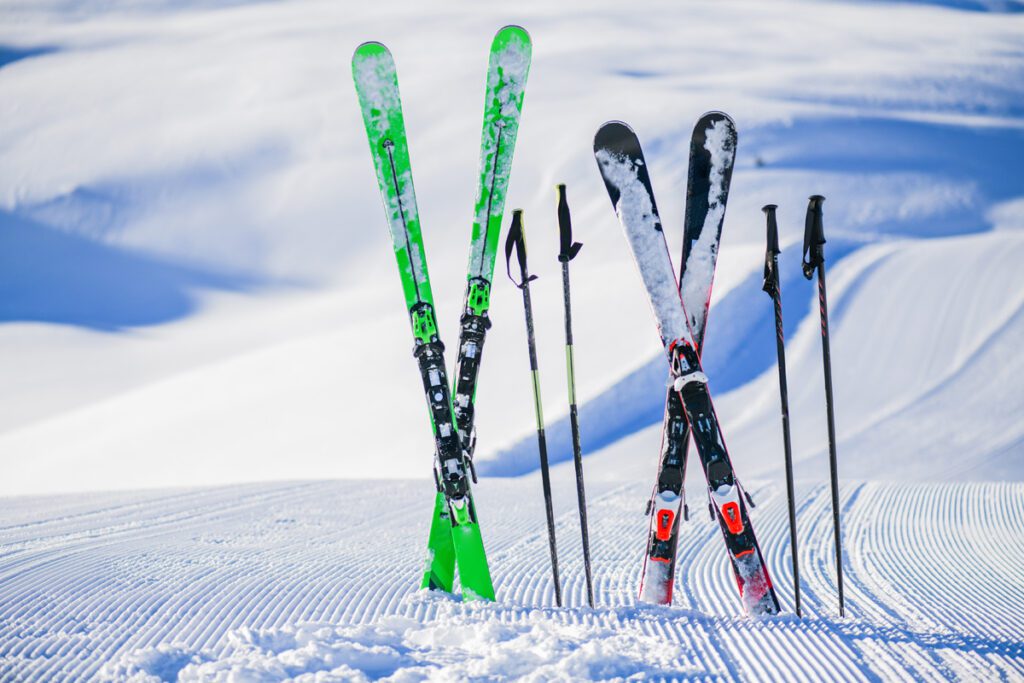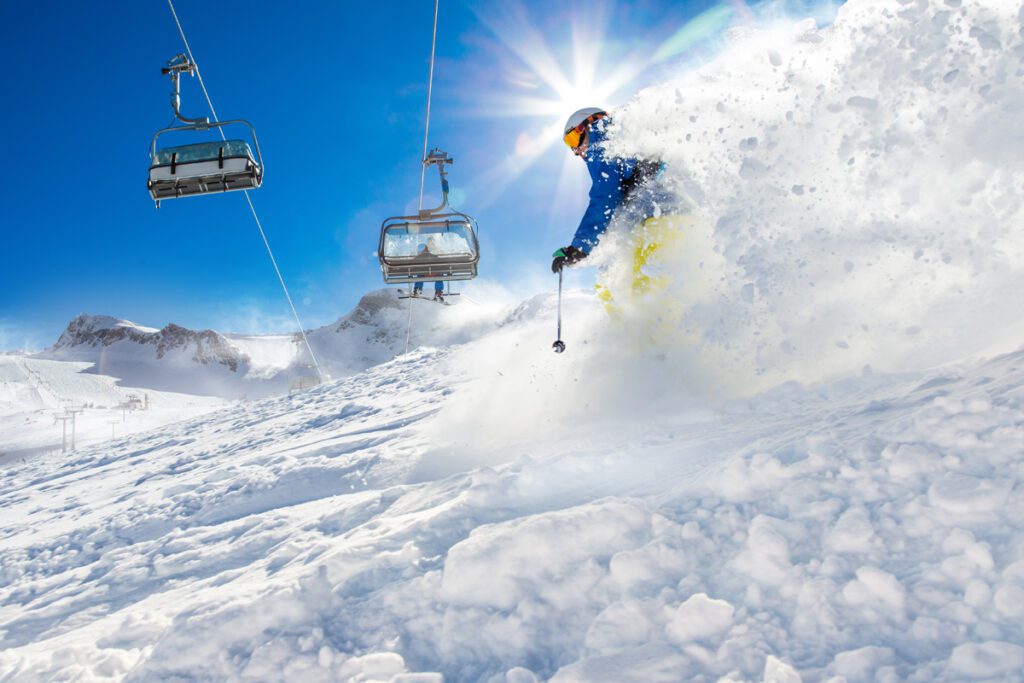How to Get Your Skis and Snowboard Ready to Ride
To make the most of your time on the slopes, it’s essential to ensure your gear is in prime condition. Proper maintenance isn’t just about preserving your investment; it’s about guaranteeing a safe and exhilarating experience while carving down the mountainside. In this blog, we highlight the key steps to getting your skis and snowboards ready to ride so you can enjoy a season of unforgettable moments.
Assessing Your Gear
Before you hit the slopes, it’s crucial to give your skis and snowboards a thorough visual inspection. Look for visible damage, such as dings, scratches, or cracks on the base or topsheet. Pay special attention to the edges, which can be susceptible to damage from rocks or hard impacts. Identifying and addressing any damage early can prevent more significant issues later on.

Examine the bindings to ensure they are securely attached to your skis or snowboard. Check for loose screws, missing parts, or any signs of wear and tear. Properly functioning bindings are essential for your safety on the mountain, so if you have any doubts, consult a professional to address any binding concerns.
While a visual inspection is essential, some issues may not be immediately apparent. If you have any doubts about the condition of your skis or snowboard, or if they’ve seen heavy use, it’s advisable to consult a professional technician. They can perform a more in-depth assessment and recommend necessary repairs or adjustments so you will be ready to ride.
Cleaning and Prepping
Over time, dirt, wax residue, and other contaminants can accumulate on the base, affecting your performance. To clean the base, use a base cleaner or a mix of warm water and dish soap. Scrub the base with a soft brush, working from tip to tail, then rinse it thoroughly. This will ensure your equipment glides smoothly over the snow.
Once the base is clean and dry, it’s time to apply wax. Waxing is a critical step in preparing your skis and snowboard for the season. Choose an appropriate wax for the snow conditions you expect to encounter. Wax not only enhances your glide but also protects the base from drying out. Apply the wax evenly and let it cool before scraping off the excess with a wax scraper. Finally, brush the base with a nylon or horsehair brush to achieve a polished finish.
Properly tuned edges are essential for control and maneuverability on the slopes. To sharpen your edges, you’ll need an edge tool, a diamond stone or file, and a guide. Begin by setting the angle of your edge tool to match your skill level and skiing or snowboarding style. Gently run the tool along the edges, removing any burrs or imperfections. Be sure to maintain a consistent angle for a smooth and precise edge.

Binding Adjustment and Safety
Ski and snowboard bindings play a crucial role in your safety on the mountain. The release settings on your bindings determine how and when your boots will release from your skis or snowboard during a fall or twist. These settings should suit your skill level, weight, and skiing or snowboarding style. Too tight or too loose bindings can lead to injuries. Consult your equipment manufacturer’s guidelines or a professional technician to ensure your bindings are set correctly.
Adjusting your bindings can be a straightforward process, but it’s essential to follow the manufacturer’s instructions carefully. Typically, you’ll need a screwdriver or a specialized binding tool to make adjustments. Pay attention to the release settings, forward pressure, and DIN settings. If you’re unsure about the adjustments or their impact on your performance and safety, it’s best to seek help from a certified technician to ensure they are dialed in.
Once your bindings are adjusted, it’s crucial to test the release function to confirm they’re working as intended. Most bindings have a function that allows you to release your boots from the skis or snowboard manually. Do this test carefully to ensure that the bindings release appropriately, both laterally and vertically. If you encounter any issues, or if the release doesn’t feel right, consult a technician to address the problem before heading to the slopes.
Waxing and Tuning
Selecting the appropriate wax is essential to maximize your skiing or snowboarding performance. Waxes are designed for different snow conditions, such as cold, warm, or all-temperature wax. Consider the climate and snow conditions you expect to encounter during your winter sports adventures. The right wax will enhance your glide, provide better control, and help you enjoy a smoother ride down the slopes.
Proper edge tuning is essential for control and maneuverability on the mountain. You can use a diamond stone or file to maintain your edges. Ensure the edges are sharp but not overly aggressive, as this can affect your ability to control your turns. Pay attention to the base and side edges and maintain a consistent angle during the tuning process.
Before hitting the slopes, when you are ready to ride, perform a few test runs to ensure your skis or snowboard have the proper glide and grip. Adjust your technique and body positioning to get a feel for your freshly tuned equipment. This will help you fine-tune your setup for the best performance on the mountain.

Maintaining Your Gear
To keep your gear in top-notch condition and ready to ride throughout the season, it’s essential to perform regular inspections. These inspections should be conducted before and after each outing to identify any issues and address them promptly. Key aspects to check include:
- Visual inspection: Examine your equipment for wear and tear, damage, or loose parts.
- Binding checks: Verify that your bindings are still securely attached and functioning correctly.
- Edge maintenance: Check the sharpness of your edges and perform minor tuning as needed.
- Base condition: Ensure the base is free from damage and maintain the waxed surface for optimal glide.
On-Mountain Care
While on the mountain, there are steps you can take to protect your gear and maximize its longevity:
- Avoid sharp rocks and obstacles: Be mindful of your surroundings and steer clear of rocky terrain and obstacles that can damage your skis or snowboard.
- Regularly check your gear: Take breaks to inspect your equipment for any visible issues, loose bindings, or unexpected damage.
End-of-Season Maintenance
As the season comes to a close, it’s crucial to prepare your gear for storage. Proper end-of-season maintenance ensures that your equipment remains in good condition for the following year and be ready to ride:
- Clean and wax: Thoroughly clean your skis or snowboard and apply a protective layer of wax to prevent the base from drying out during the off-season.
- Inspect for any hidden damage: Perform a final visual inspection to identify any hidden issues that may require repair.
- Storage tips: Store your equipment in a cool, dry place, away from direct sun and extreme temperatures. Keep them in a vertical position or use ski and snowboard racks to prevent warping.